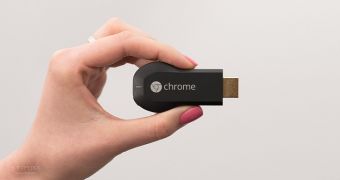Last July, Google introduced Chromecast, the dongle used to cast content from smartphones, tablets and laptops straight to TVs. A couple of months ago, the device finally reached a few European countries, but now it’s heading straight for Korea.
“Whether it's K-Pop superstars, loveable penguins, or geriatric comedy antics — Koreans will now be able to use Chromecast to bring their favorite content on a phone, tablet or laptop to the biggest screen in their homes,” reads a blog post on Google’s Asia Pacific site signed by Mickey Kim, head of Chromecast and TV partnerships for this area.
Thanks to a partnership between Google and Korean streaming media services Tving and Hopping, Koreans will be able to stream tens of thousands of videos, movies and popular TV shows, debate shows and more.
“Koreans are some of the most savvy consumers of content over the Internet in the world and the smartphone is already a much larger part of their media consumption than elsewhere. Over 80% of YouTube views in Korea come from mobile devices, compared to the 40% average for the world,” Google explains its decision to expand Chromecast to this Asian country.
Back in March, Google made Chromecast available for Europeans and people in Canada. Users in 11 countries were able to start purchasing the dongle from Google’s site – Canada, Denmark, Finland, France, Germany, Italy, Netherlands, Norway, Spain, Sweden and the United Kingdom.
Ever since Google Chromecast was launched in July 2013, a lot of apps have been launched that support casting content to it. Originally, it was possible to cast YouTube content, as well as from Netflix, HBO Go and more.
Then, a few months back, Google released the developer kit to the world, allowing people to create their own apps. The result was a slew of apps not only for content, but also for games such as Snake and the exasperating 2048.
Most of them, however, revolve around user content, which was more or less impossible to cast before. Some apps appeared soon after Chromecast landed, but Google fiddled with the policy and basically banned them. By opening the SDK, however, everything was fair game and so it became possible to cast personal videos, photos and music to the TV.
In Korea, Chromecast costs 49,900 won, or an estimated $48.6, a bit higher than the $35 that people in the United States have to pay for it.

 14 DAY TRIAL //
14 DAY TRIAL //